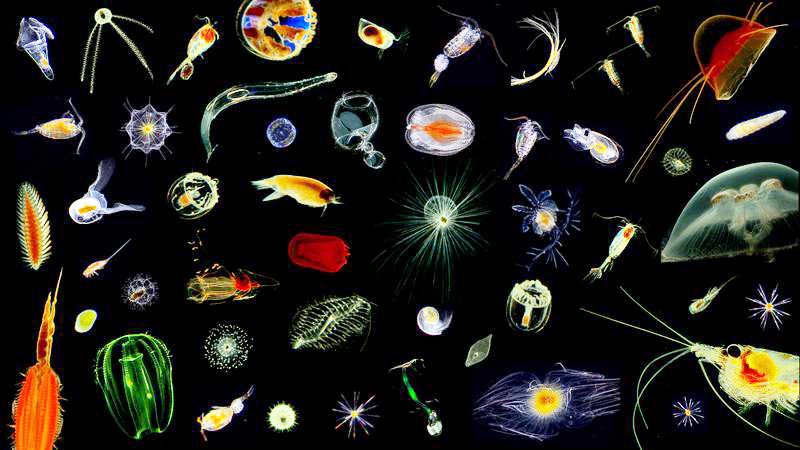

Microcosmos of the ocean: Plankton, imaged in the North Atlantic Ocean.
(c) Hereon/Klas Ove Möller
In the AqQua project Hereon is involved in monitoring global populations of organisms in water.
Plankton and organic particles take up carbon from the atmosphere, transporting it from the water’s surface to the deep sea. As a result, the Earth’s climate is heavily influenced by life in the water. The AqQua project aims to determine how many of these microscopic organisms exist globally, how they are distributed, and how these patterns are changing due to climate change. Researchers are analyzing billions of images for this purpose. The Helmholtz Foundation Model Initiative (HFMI) is funding the project. Hereon is involved through its Institute for Carbon Cycles.
Climate change affects carbon export and food resources in aquatic ecosystems. Despite its crucial role, little is known about the spatial and temporal abundance of plankton on global scale. There are also significant uncertainties in estimating the global marine carbon export through the biological carbon pump. The carbon pump refers to the process in the ocean where phytoplankton absorb carbon dioxide (CO₂) from the atmosphere through photosynthesis and convert it into organic material. This material is either processed through the food chain or sinks to the ocean floor, where carbon is stored long-term.
Potential of image data
To assess the role of aquatic life in climate regulation and human food resources, precise monitoring is needed. Recently, aquatic life has been observed using imaging techniques, which provide data on biodiversity and the functioning of food webs and ecosystems, even in the deep sea. However, global data have not been comparable, and there has been a lack of training images. As a result, a comprehensive analysis has not been possible.
Building a new AI model
AqQua aims to fill this gap. The name stands for The Aquatic Life Foundation: Quantifying Life at Scale in a Changing World. The project involves compiling billions of images and using high-performance computers to train the first foundational AI model for pelagic imaging. Pelagic imaging is a method used to capture images and data from all water bodies in aquatic habitats, both in oceans and freshwater. So-called Foundation models represent a new generation of AI models with a broad knowledge base. They are significantly more powerful and flexible than traditional AI models, making them highly promising for modern, data-driven science. These models are capable of answering complex research questions. The project team will receive funding from the Helmholtz Foundation Model Initiative to build the foundation model AqQua.
The project team will receive funding from the Helmholtz Foundation Model Initiative to build the foundation model AqQua.
Dr. Klas Ove Möller, who coordinates the project at Hereon, explains: “In the first phase, the model will be optimized for species classification, their characteristics, and the precise determination of organic carbon. In the following steps, we will dive deeper and extract additional features, known as traits, from the images. Each individual image can contain a wealth of information. This will create a fundamental understanding in times of global change and additionally help to assess improved carbon budgets and evaluate emerging ocean-based technologies for CO₂ storage”.
In addition to Hereon, the AqQua project includes participation from the Max Delbrück Center, GEOMAR, and the Jülich Research Center. Other collaborators include the Helmholtz Artificial Intelligence Cooperation Unit, Helmholtz Imaging, the Helmholtz Centre for Environmental Research (UFZ), and the Alfred Wegener Institute (AWI).
Wissenschaftliche Ansprechpartner:
Dr. Klas Ove Möller
Scientist
Institute of Carbon Cycles
Helmholtz-Zentrum Hereon
Phone: +49 (0) 4152 87-2371
Mail: klas.moeller@hereon.de














